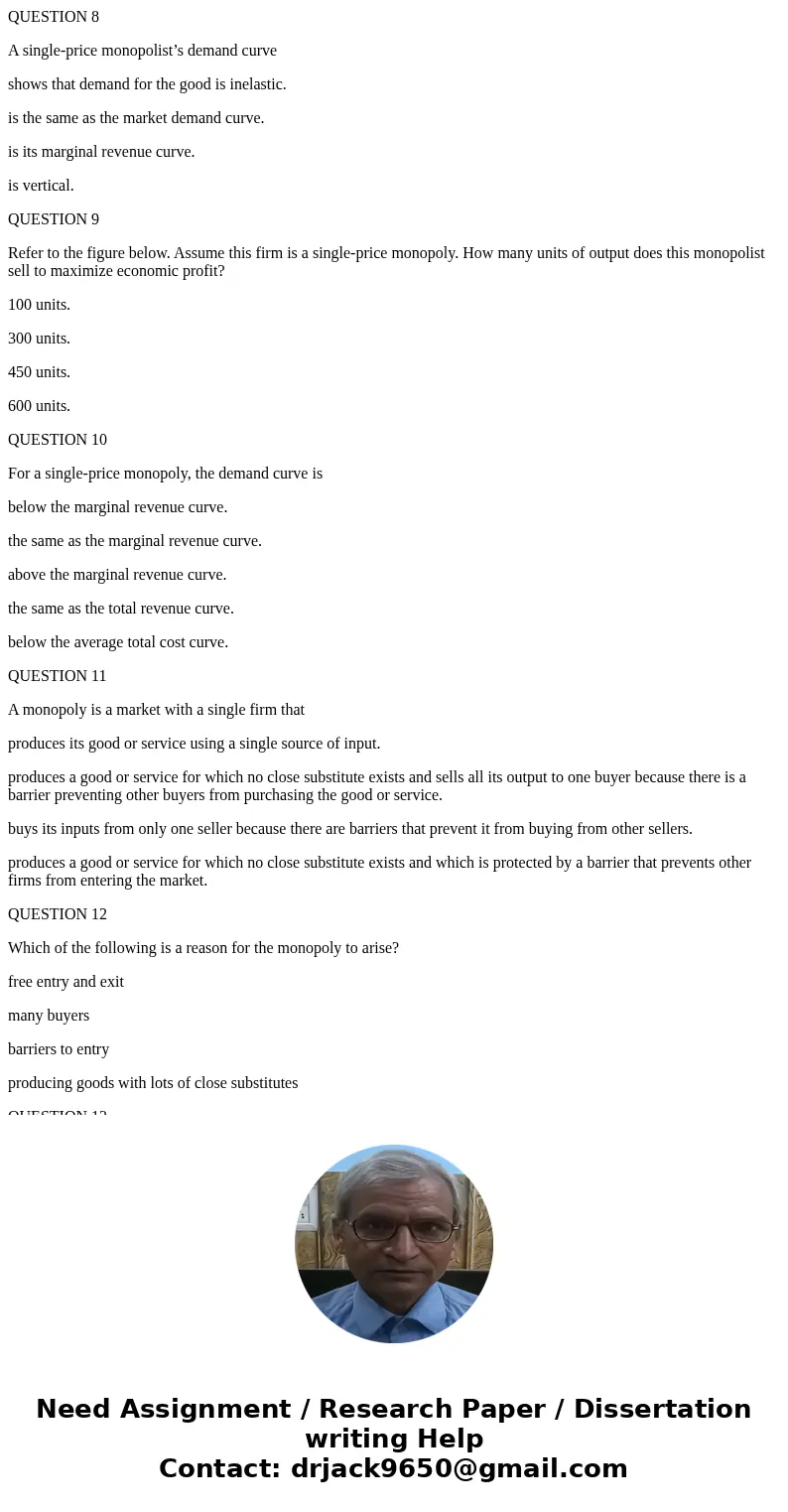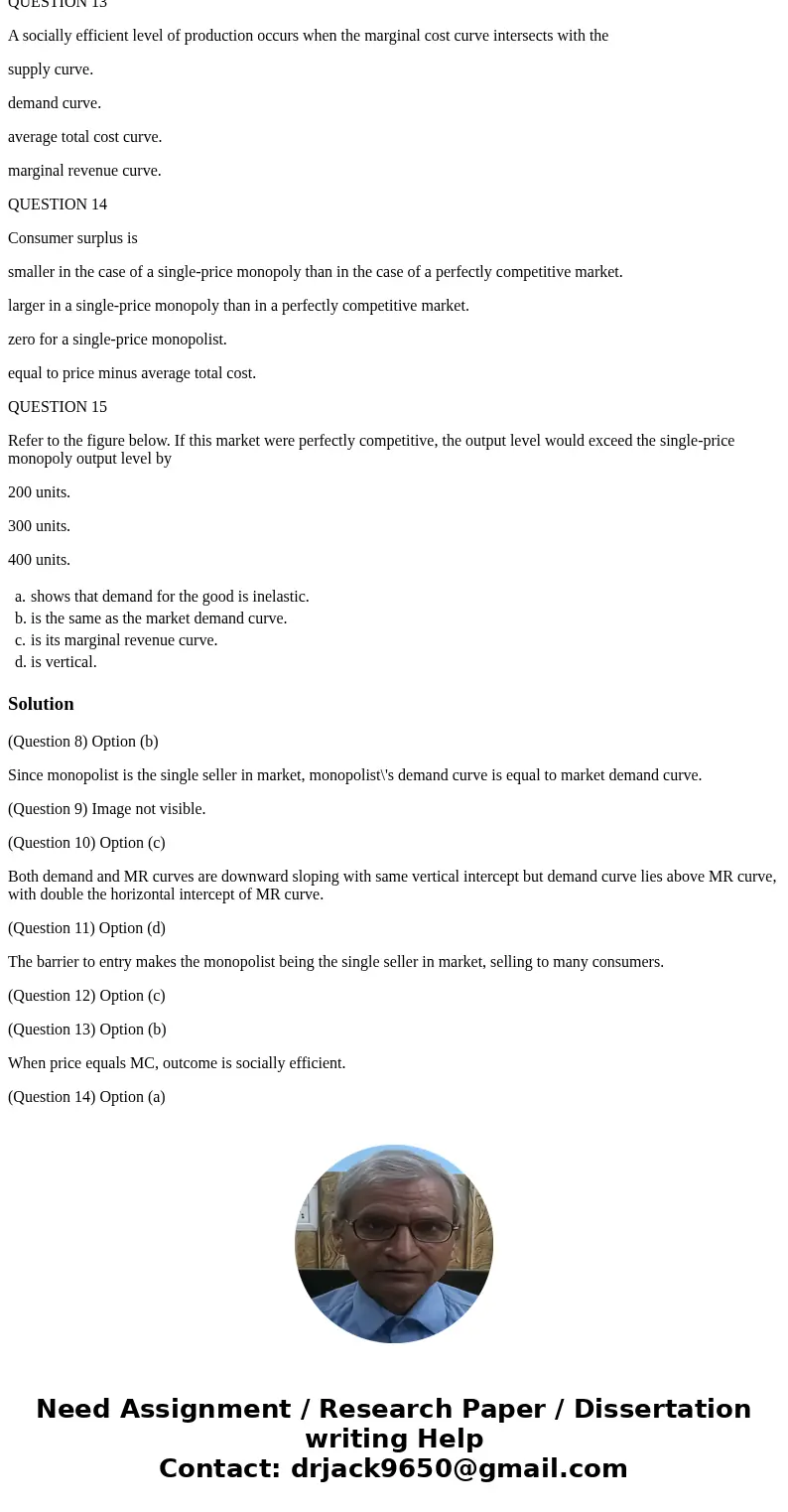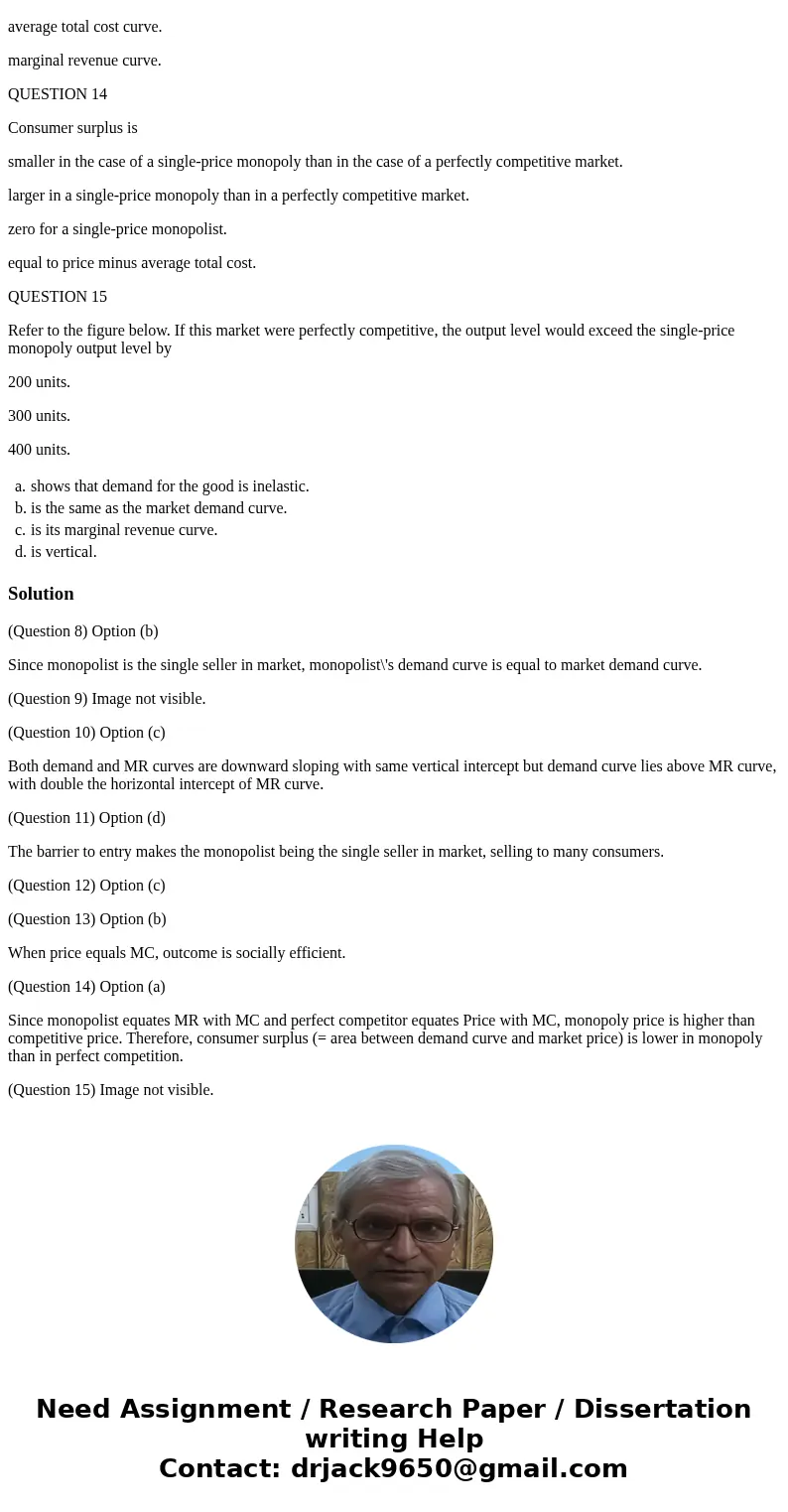QUESTION 8 A singleprice monopolists demand curve shows that
QUESTION 8
A single-price monopolist’s demand curve
shows that demand for the good is inelastic.
is the same as the market demand curve.
is its marginal revenue curve.
is vertical.
QUESTION 9
Refer to the figure below. Assume this firm is a single-price monopoly. How many units of output does this monopolist sell to maximize economic profit?
100 units.
300 units.
450 units.
600 units.
QUESTION 10
For a single-price monopoly, the demand curve is
below the marginal revenue curve.
the same as the marginal revenue curve.
above the marginal revenue curve.
the same as the total revenue curve.
below the average total cost curve.
QUESTION 11
A monopoly is a market with a single firm that
produces its good or service using a single source of input.
produces a good or service for which no close substitute exists and sells all its output to one buyer because there is a barrier preventing other buyers from purchasing the good or service.
buys its inputs from only one seller because there are barriers that prevent it from buying from other sellers.
produces a good or service for which no close substitute exists and which is protected by a barrier that prevents other firms from entering the market.
QUESTION 12
Which of the following is a reason for the monopoly to arise?
free entry and exit
many buyers
barriers to entry
producing goods with lots of close substitutes
QUESTION 13
A socially efficient level of production occurs when the marginal cost curve intersects with the
supply curve.
demand curve.
average total cost curve.
marginal revenue curve.
QUESTION 14
Consumer surplus is
smaller in the case of a single-price monopoly than in the case of a perfectly competitive market.
larger in a single-price monopoly than in a perfectly competitive market.
zero for a single-price monopolist.
equal to price minus average total cost.
QUESTION 15
Refer to the figure below. If this market were perfectly competitive, the output level would exceed the single-price monopoly output level by
200 units.
300 units.
400 units.
| a. | shows that demand for the good is inelastic. | |
| b. | is the same as the market demand curve. | |
| c. | is its marginal revenue curve. | |
| d. | is vertical. |
Solution
(Question 8) Option (b)
Since monopolist is the single seller in market, monopolist\'s demand curve is equal to market demand curve.
(Question 9) Image not visible.
(Question 10) Option (c)
Both demand and MR curves are downward sloping with same vertical intercept but demand curve lies above MR curve, with double the horizontal intercept of MR curve.
(Question 11) Option (d)
The barrier to entry makes the monopolist being the single seller in market, selling to many consumers.
(Question 12) Option (c)
(Question 13) Option (b)
When price equals MC, outcome is socially efficient.
(Question 14) Option (a)
Since monopolist equates MR with MC and perfect competitor equates Price with MC, monopoly price is higher than competitive price. Therefore, consumer surplus (= area between demand curve and market price) is lower in monopoly than in perfect competition.
(Question 15) Image not visible.



 Homework Sourse
Homework Sourse